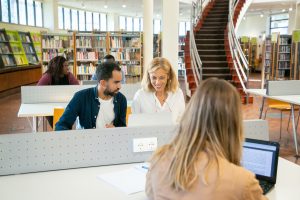Technology in education is everywhere: in schools, in churches, in the media, and even on TV. Students, parents, teachers, and researchers are recognizing the many benefits that come from using technology in education. Students benefit from using digital technologies to not only learn but also to be entertained. And teachers benefit from using technology in education because it allows them to offer engaging and innovative lessons.
Using technology in education to help teachers gain an understanding of the real world outside of the classroom. Technology gives teachers the ability to reach out to students beyond what they may have learned in school. Technology is also able to give teachers resources beyond the traditional curriculum. Teachers can use technology in education for social media, web browsing, and online games. The integration of technology into the classroom creates an environment that allows students to develop social interaction skills, and to create their own independent learning.

The use of digital tools and social media
How to use technology in education can be challenging. Social media has changed the way people communicate, share, and form relationships. But how do you balance the use of technology with the teaching of values and the building of community? Here are some tips on incorporating technology into your classroom.
Digital tools such as laptops, tablets, digital pens, and even smartphones can be an asset when teaching your children. The use of digital tools helps us make teaching easier by providing a way for the teacher and students to share and work together. Technology provides a way for students to take part in activities, while also working toward a common goal. The use of digital tools in your classroom helps us make teaching easier.
The use of information technology can enhance the experience of students on classroom social media. Social media such as Facebook, MySpace, Twitter, and others allow students to communicate with each other in a way not possible in a traditional classroom setting. Information technologies have opened the door to a richer, broader, and more connected classroom experience. Students learn from teachers who are experiencing it first hand; students learn from teachers who use the most up-to-date technologies, and students learn from teachers who can use technology in education to their advantage.

Teachers can connect with students
In our homes, families, and schools, we use technology to coordinate schedules, manage chores, plan for the day, send text messages, play games, listen to music, etc. There are endless ways that families, kids, teachers, and schools can work together. With the help of technology, it’s easy to stay connected long after a lesson is over. One of the key benefits of using technology in education is that it helps us feel connected. Online resources and online discussion boards are just two examples of how teachers can connect with students.
Technology can actually facilitate rather than hinder the learning process. A genially connected teacher can use technology to provide his students with opportunities to engage with one another. For example, a teacher can videotape a lesson, revise it, revise it again, and then videotape some more. Technology is also being used as a teaching aid in the educational community.
Digital learning
One tool that is starting to show up in educational settings nationwide is digital learning. This is one of the non-traditional methods of teaching. Digital learning helps teachers provide engaging, relevant, and relevant content to students. In other words, teachers are using digital learning to teach students about the world around them through the lens of a computer screen. Teachers are using digital learning to enhance their teaching methodologies.

Non-guided-use programs
Another benefit of information technology in education programs is the non-guided-use programs. These programs allow teachers to use technology without even seeing any of the digital material. For example, PowerPoint presentations can be displayed on a computer but can’t be directly viewed by a student. Teachers can put together work-learning projects using a variety of multimedia tools and can present the projects to their students in a way that is engaging, interesting, and relevant to their learning. In other words, it’s almost like taking classes in a classroom!
Finally, teachers can use non-guided-use programs to enhance the learning experience for their students. The most commonly used examples of these programs are Wikipedia and the Android platform. Wikipedia provides free encyclopedia pages about virtually every topic. Android provides a free Android apps marketplace for teachers to use to customize their devices for educational purposes.
To sum up
Technology in education has a lot to offer both teachers and their students. In order to keep students engaged and wanting to learn, teachers need to be able to present information in a meaningful way. Using open-source technologies, such as wikis, and engaging students through activities, games, and presentations, teachers can give their classrooms a more useful and innovative edge.



